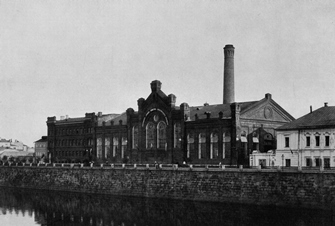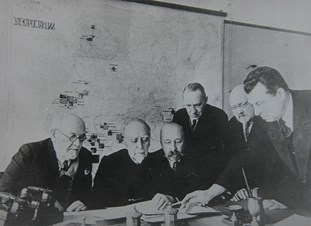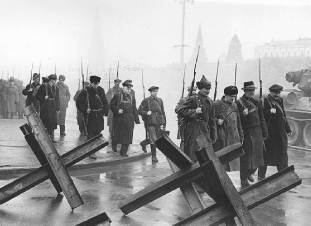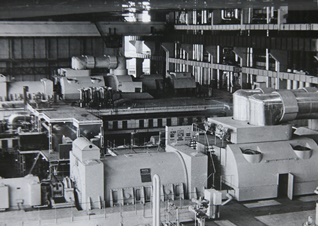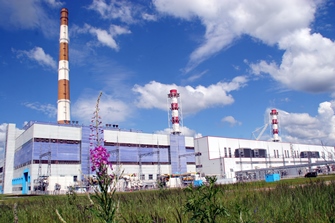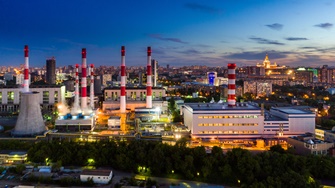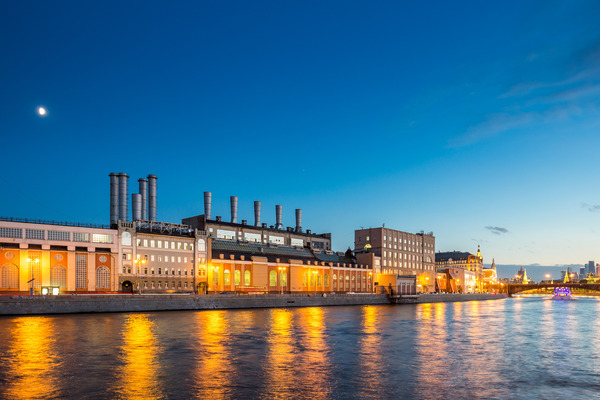1887–19171887–1917 Foundation and early years The Joint Stock Company of Electric Lighting was founded in 1886 by Carl Siemens, a Saint Petersburg merchant of the First Guild who was the Head of the Siemens & Halske Representative Office. The Company was founded in Saint Petersburg; however, at its very first Board of Directors’ meeting, a proposal was made to prepare grounds for Company operations in Moscow. At the end of 1888, the Company successfully completed the construction of the first centralized power plant. In 1912, the Company started building the world’s first peat-fired district power plant in the Bogorodsky District. In April 1913, a new company, the Moscow Joint Stock Company Elektroperedacha, was founded in order to utilize the capacity generated by the new station. The joint stock companies Electric Lighting 1886 Company and Elektroperedacha operated successfully until October 1917. After the October Revolution, those companies were nationalized and ceased operations under their previous managers in December 1917.
| 1917–19411917–1941 Development in the Soviet Union The management of state power stations was delegated to the Power Department of the Supreme Council of Public Property. At the same time, in December 1917, Ivan Radchenko and Aleksandr Vinter proposed to develop the Moscow power industry further. These proposals became the basis for the first State Plan for the Electrification of the whole country, GOELRO. Pursuant to the GOELRO Plan, several stations were built in the Moscow Region, namely Kashirskaya SDPP (now SDPP-4), Shaturskaya SDPP (now SDPP-5), Krasnopresnenskaya TPP, TPP-6 and TPP-8. One of the key events in this period was the completion of Russia’s first 110 kV voltage power line between Kashira and Moscow, as well as a two-circuit ring of power lines and transformers around Moscow with a voltage of 115 kV | 1941–19451941–1945 Operations during the World War II The start of World War II put the development of the power system on hold. Part of the equipment was destroyed, another part was evacuated and the total capacity of Mosenergo dropped twofold. Nevertheless, Moscow power engineers managed to maintain a continuous supply of power to the city’s defense facilities; they constructed high-voltage obstacles to defend against enemy troops and assembled power-generating trains for the liberated regions of the country. The restoration of the power industry started immediately after the successful counter-offensive campaign of the Soviet Army in the winter of 1941–1942. As early as 1945, Mosenergo had already managed to achieve a pre-war level of installed capacity. | 1946–19911946–1991 Technical upgrading and transformation to JSK In 1946, Mosenergo began to utilize a new type of fuel: TPP-1 started burning natural gas. Within the Unified Power System framework in 1960, the country brought into operation the first units of TPP-22, and for the first time in the USSR a 1,000 mm-diameter heat pipeline was installed at TPP-11. On October 22, 1963, Mosenergo launched TPP-21, shortly followed by TPP-23, TPP-25 and TPP-26. In the 1970s, Mosenergo successfully implemented 250-MW thermal power generating units with supercritical steam parameters. On December 30, 1987, Mosenergo brought the first hydroelectric generating set of the Zagorsk Pumped Storage Hydro Plant into operation — a unique power unit regulating peak loads in the grid system. | 1991–20071991–2007 Transforming to JSK, reform period In the 1990s, Mosenergo continued to build new generating capacities. In 1992, water-heating boilers, in 1996–1998, two power units were put into operation at Severnaya CHPP (today — CHP-27). In 1993, the production association Mosenergo was transformed into an open joint stock company. Since the mid-1990s, Mosenergo's shares have been among the most liquid securities of the Russian stock market. In 1995, Mosenergo became the first purely Russian company (without foreign participation) to enter the Western stock market and place American depositary receipts (ADRs) for Company’s shares. In April 2005, during the reform of the Russian Federation Government, Mosenergo, the Russian largest vertically integrated regional energy company at the time, was divided into 14 separate companies by type of business: generating, network, repair, sales, etc.
Mosenergo retained its generating assets, uniting 32 branches, including 17 thermal power plants with a total installed capacity of 10,600 MW and a heat capacity of 39,000 MW. In 2005, Mosenergo grew and started the implementation of the Program for Development and Technical Upgrading, including the planning, construction and commissioning of new generating facilities on the sites of operational power plants in energy-deficient regions and heat and electricity demand nodes with developed infrastructure. | 2007-tll now2007-tll now Expansion activities
- On November 22, 2007, less than two years after the start of construction, TPP-27 launched a combined cycle steam-and-gas power unit with an electric power rating of 450 MW and heat output of 300 Gcal.
- In June 2008, a unit of the same type was put into operation at TPP-21, and in December of the same year, the Company installed yet another 450-MW steam-and-gas power unit at TPP-27.
- On 30 June 2011, a new 420-MW steam and gas power unit was put into operation at TPP-26. This unit has one of the highest efficiency rate among Russian power plants. The general construction contractors were the Alstom Consortium.
- In April 2014, a SGU-65 unit with an AE64.3A Ansaldo Energia gas turbine was commissioned at TPP-9.
- In December 2014, a SGU-420 was commissioned at TPP-16 (the manufacturer and the supplier of the basic equipment: Siemens. A new steam and gas power unit (SGU-220) was commissioned at TPP-12 of Mosenergo PJSC on June 26, 2015.
- On December 22, 2015, modern steam and gas power SGU-420 unit were commissioned at TPP-20 of Mosenergo in Moscow.
- Since November 2015 the Reconstruction and replacement pilot project of T-250 has begun.
All of these investments were made on the basis of Power Delivery Contract, which guarantees the return on investment. Nowadays the Company works on on operational efficiency and asset quality improvement and also looks for new investment initiatives implementation. |
